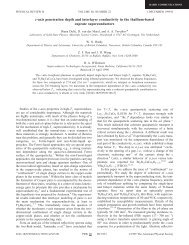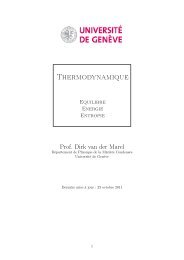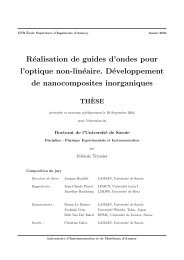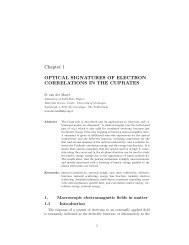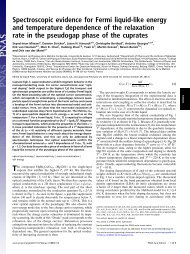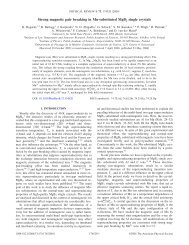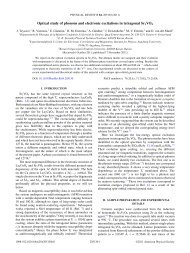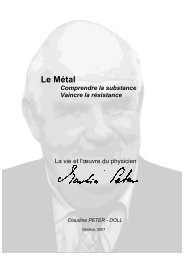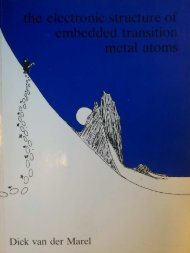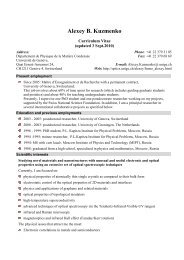software to fit optical spectra - Quantum Materials Group
software to fit optical spectra - Quantum Materials Group
software to fit optical spectra - Quantum Materials Group
Create successful ePaper yourself
Turn your PDF publications into a flip-book with our unique Google optimized e-Paper software.
3. Tu<strong>to</strong>rial<br />
This chapter shows how <strong>to</strong> solve typical problems using RefFIT. Each section is devoted<br />
<strong>to</strong> a particular task. I suggest you <strong>to</strong> go through the sections sequentially, since the last parts do<br />
not repeat the detailed explanations, given in the beginning. It is especially important <strong>to</strong> read<br />
the first section (3.1), which deals with the most basic RefFIT objects.<br />
Of course, before the going through this tu<strong>to</strong>rial, you should install RefFIT on your<br />
computer. This simple procedure is explained in section 4.2.<br />
3.1. Drude-Lorentz <strong>fit</strong>ting of a reflectivity spectrum<br />
As I already mentioned, RefFIT was created as a reflectivity <strong>fit</strong>ting routine with the<br />
Drude-Lorentz dielectric function (Equation 2-18). The normal-incidence reflectivity R (ω)<br />
is<br />
expressed via the dielectric function ε (ω)<br />
according <strong>to</strong> Fresnel formula:<br />
2<br />
1−<br />
ε<br />
R = .<br />
1+<br />
ε<br />
It is one the most common data analysis that solid-state infrared spectroscopists do. So why<br />
don’t we try it first?<br />
In order <strong>to</strong> do it in RefFIT, one should first open a model window by choosing “Model”<br />
from the “Window” menu (Figure 3-1). It contains a particular DL model that can be used later<br />
on for plotting graphs, <strong>fit</strong>ting data and so on. In this window we can add or delete the Lorenzian<br />
terms and manually edit parameters. The “Einf” field stands for ε ∞ ; “Wo”, “Wp” and “G”<br />
designate the transverse frequency ω 0i<br />
, the plasma frequency ω pi and the scattering rate γ i<br />
respectively, measured in inverse centimeters 10 (cm -1 ). By the way, 1 eV is about 8000 cm -1 .<br />
Let us keep for a while the initial values (Figure 3-1).<br />
10<br />
Inverse centimeters are apparently invented by the infrared spectroscopists <strong>to</strong> make the life of normal people<br />
more difficult ☺.<br />
Guide <strong>to</strong> RefFIT Page 25



